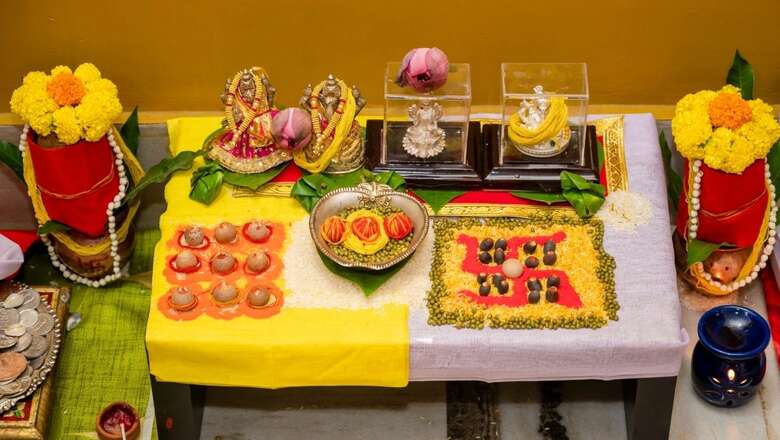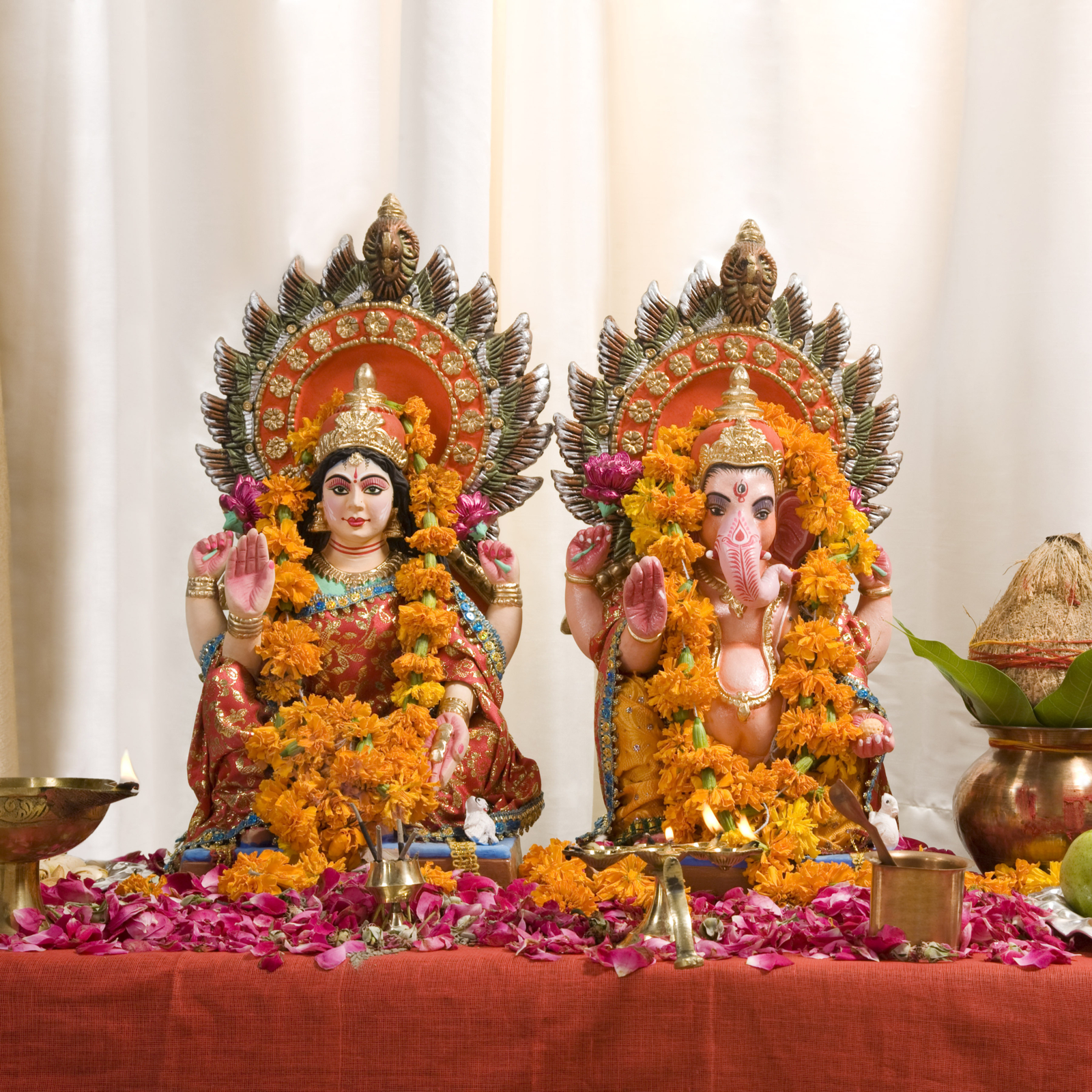
views
Diwali is a grand festival celebrated in India. It spans five days which include Dhanteras, Chhoti Diwali (Narak Chaturdashi), Diwali, Govardhan Puja, and Bhai Dooj. Being celebrated today on November 12, Diwali is the special occasion when people worship Lord Ganesh and Goddess Lakshmi and perform Shri Ganesh-Lakshmi Pujan. The puja is conducted in the evening during the auspicious muhurta to welcome Goddess Lakshmi into one’s home.
Devotees engage in prayer and seek blessings for love, light, peace, wealth, and prosperity in their lives. Therefore, it is crucial to have an understanding of the Diwali Puja. To carry out Ganesh-Lakshmi Puja at home with all the rituals, follow the detailed steps below.

Step 1: Clean Your House
Cleaning your entire house during Diwali is a common tradition in many parts of India and among the Indian Diaspora. This ritual is believed to signify the removal of negative energy and the welcoming of positive energy into your home. After cleaning, it is customary to sprinkle some Gangajal, which is holy water from the sacred River Ganga, to purify the surroundings.
Step 2: Set up your Temple
Place a table or stool in your puja room or living room. Now, with the help of kumkum (vermillion), draw a Swastika in the center. Write the words “Shubh” on the left and “Labh” on the right in Hindi. Lastly, drape it with a red cotton cloth and put a handful of grains in the center.
Step 3: Place a Kalash
Take a silver, bronze, or earthen Kalash and keep it on the grains. With the help of kumkum, make a Swastika or Om symbol on Kalash and tie a sacred Kalawa thread around its neck. Fill the Kalash with 75% water and add one supari (betel nut), one marigold flower, a coin, and some rice grains. Now, arrange five mango leaves in a circular pattern on the Kalash. The leaves should be partially inside and partially outside. Finally, close the lid.
Step 4: Place Ganesha & Lakshmi Idol
Begin the sacred ritual by positioning the idol of Lord Ganesha to the Southwest of the Kalash. Create a small rice grain bed on the Kalash lid and adorn it with a lotus flower drawn in haldi (turmeric powder). Then, place the idol of Goddess Lakshmi in the center. Now, on a small plate add some rice grains, and a real lotus flower, and keep some coins in front of the Goddess. You can also offer some other flowers if lotus is not available.
Step 5: Keep accounts books/wealth-related items
You can put items related to your business or accountancy, such as bill books, ledgers, and other wealth-related items. You can also add gold and silver coins or currency notes or bundles if available as offerings.
Step 6: Light Diyas, Apply Tilak & Offer Flowers
Take kumkum and apply tilak to Lord Ganesh, Goddess Lakshmi, and on Kalash. Light Dhoop Batti and two big diyas: one of ghee and the other one of mustard oil. Light nine small diyas using mustard oil. Small diyas represent the nine planets. You can also light some candles if you wish. Now, offer flowers to idols of Lord Ganesha and Goddess Lakshmi.
Step 7: Recite Puja Mantra
Hold a flower in your hands, join your hands, close your eyes, and chant the Diwali Puja Mantra. Once you are done, offer flowers to Lord Ganesha and Goddess Lakshmi as a gesture of devotion.
Step 8: Offer Gangajal
Pour some Gangajal (holy water) on the Goddess Lakshmi idol, followed by a cleansing bath with panchamrita. Now, perform a second bathing with Gangajal, wipe it with a cloth, and then place the idol back atop the Kalash.
Step 9: Offer Garlands (Mala)
Apply haldi, Chandan, kumkum and rice grain to the idol of Lord Ganesha and Goddess Lakshmi. Place a garland (mala) around the neck of both Goddess Lakshmi and Lord Ganesh. Light an agarbatti (Incense sticks) and perform puja.
Step 10: Sweets & Fruits
Offer fruits and sweets of your choice to the deities. Add items like coconut, supari (betel nut), paan (betel) leaves, and at least five different types of fruits and sweets as a token of your devotion.
Step 11: Perform Maa Lakshmi’s Aarti
Conclude the puja by taking a thali (plate), putting a lightning diya on it, and ringing the bell. If you wish, you can also recite four additional Aartis, one for Lord Ganesh, one for Lord Ram, one for Goddess Durga, and one for Lord Vishnu, to complete the spiritual offerings.


















Comments
0 comment